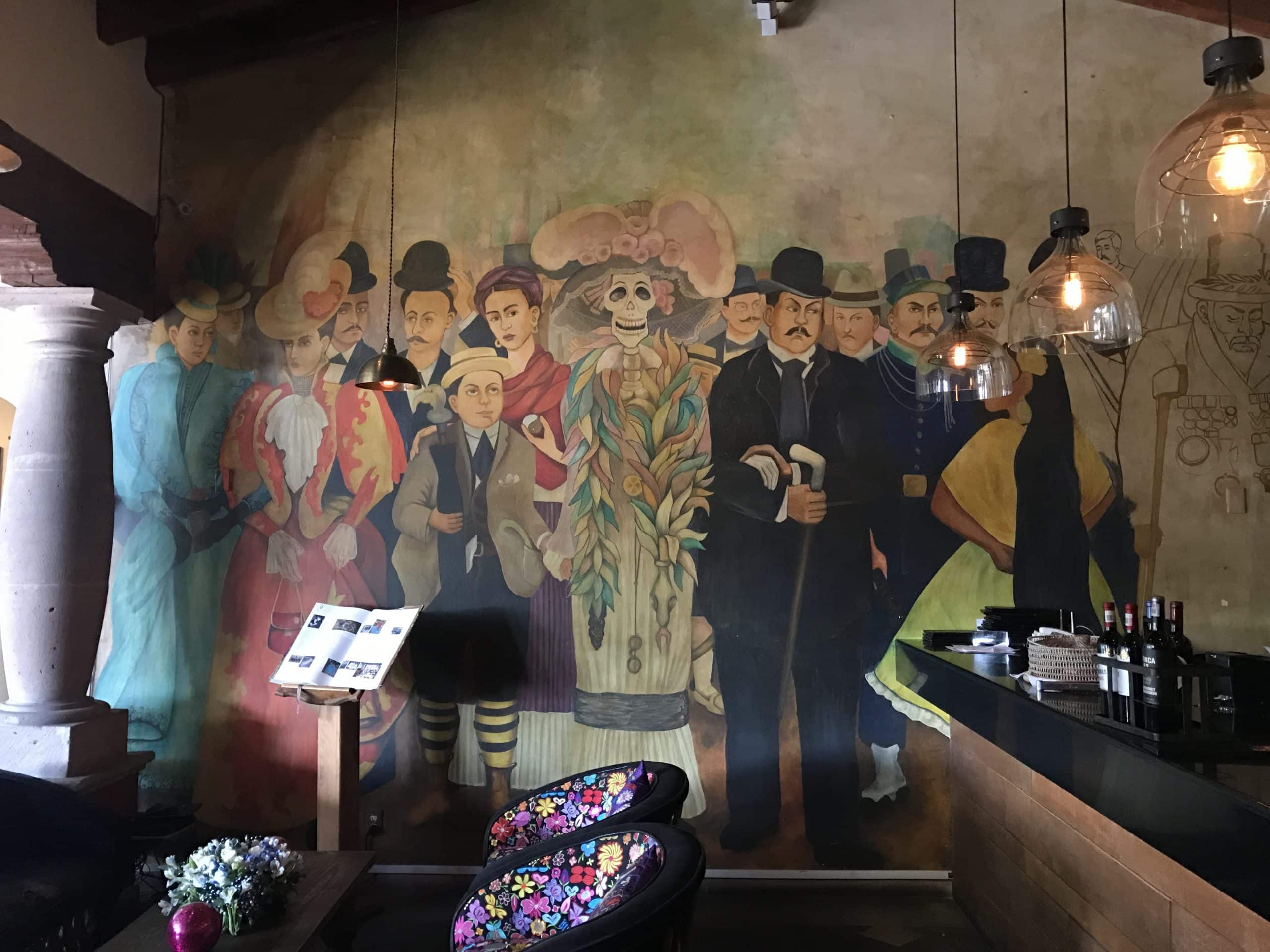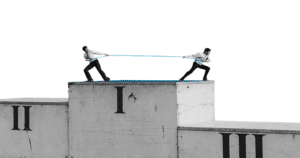As (if) coaches mature in their practice, they become increasingly aware that it is impossible – other than in the context of simple, short-term problems – to coach the individual without coaching the systems, of which they are a part. People inorganizations rarely operate in isolation. Their successes and failures and the irability to bring about change internally and externally, are heavily dependent onother people – on how they think and what they do.
As one-to-one coaches, we can help clients think through how they will bring about sustainable change by influencing the people and systems around them, to become supportive of those changes. But the potential to do this is limited. It’s a bit like trying to paint a portrait, when the subject is behind a screen.
Team coaching provides a practical way to address the system as a whole. The client becomes the team, not the individual manager. There is still the problem of how this team interacts with others, but just as individuals can learn to managebetter the systems around them, so can teams.
Teams are the most practical unit to integrate the individual and systemic perspectives and to manage the complexity of co-working. It’s not surprising then, that team coaching has emerged as a growing practice.
There are at least three ways, in which team coaching is different in context from one-to-one coaching. Specifically:
- Confidentiality: even with a high degree of psychological safety, team members may be reluctant to disclose to a group of colleagues, or to admit weaknesses to their boss.
- Pace of thinking and deciding: some members of the team may reach a conclusion faster than others. Where the coach in a one-to-one relationship can adjust pace to the speed of the coachee’s mental processing, the team coach needs to be able to hold the attention and interest of the vanguard, while ensuring the rearguard are able to catch up at their own pace.
- Scope of topic: team coaching can only deal effectively with issues, in which all the team members have a stake. Sometimes this involves helping teammembers recognize the mutual benefits and value of supporting a colleague.Where team coaching helps
Team coaching can be applied in a wide range of circumstances, including:
- When a new team is being created and needs to hit the ground running
- When an existing group of leaders needs to evolve into a team
- When an existing team isn’t performing as well as it could
- When a team wants to reinvent itself to meet challenges in its environment
- When the team acquires a new leader or changes membership significantly
- When a team is currently highly effective and successful and wants to keepahead of the game.
The great majority of team coaching interventions appear to be at leadership team level (though this has not been validated by research). Next most common are project teams, particularly those concerned with major product launches or large-scale technological or cultural change. However, there is no reason – other than cost– why it cannot be equally helpful at any level.
So what does a team coach actually do? The roles described here come from dozens of interviews and workshops with practising team coaches around the world.
Help the team become honest with itself.
At the very basic level, this is about helping them recognise how much of a teamthey really are. Many leadership teams are only teams in name – a bunch of feisty individuals, who have divergent agendas, little interchangeablity of roles and little dependency on each other. Establishing where they need to be a team and whenprovides clarity and the basis for more effective working together. Team coaching helps the team – as both individuals and collectively – become more self-aware andauthentic. As one manager put it: “It’s about helping us to have the courage to seeourselves as we are — and to behave as who we are, rather than feel we have to puton an act.”
Defining the team purpose and priorities
It’s unfortunate that mission statements and other strategic paraphernalia can give agloss of purposefulness, while underneath there is at best an uneasy consensus. Inone public sector leadership team I worked with, everyone had signed up to astrategy document that was about to go public. However, the chief executive was farfrom sure they were actually aligned as a team in how they interpreted the words. Team coaching helped them open up sufficiently to bring these differences into theopen and to gain a much deeper level of agreement about the priorities for each ofthem personally and for their departments.
Understanding the environment
Much of the work of team coaches relates to helping the team understand internaland external systems. For example, who are the hidden influencers andstakeholders? Managing team reputation is a common theme here. So too ishelping the team face up to threats it has avoided acknowledging.
Understanding team processes
Once a team have been together for a while, it’s inevitable that routines develop and gradually these become so ingrained in the thinking and behaviour of the team, that they are never questioned seriously. Team coaching shines a light on how the team functions, on its unwritten rules and behavioural norms, and hence creates opportunities to bring about conscious change.
Identifying and tackling barriers to performance
One of the classic dilemmas for teams is that recognition and reward tend to be based on individual performance, but that a lot of great individual performances canadd up to relatively poor collective performance. Group think, lack of key skills, dysfunctional behaviours that no-one is prepared to confront – the list of barriers is endless. Team coaching again encourages the honest conversation that allows the team to identify and challenge its performance barriers.
Building the capacity to manage conflict positively
Conflict about task and process can be destructive or productive, depending on how it is managed. Relationship conflict is always destructive. Team coaching not only surfaces and, where possible, defuses hidden conflict. It also equips the team with the tools and skills to use conflict to generate dialogue and hence improve performance.
Building the team learning plan
The team learning plan defines what the team and its individual members need and want to learn, how this will contribute to the business purpose and the responsibilities, each holds to the others in helping achieve the learning goals. It is as important a document as the business plan, because it underpins targets and goals with practical ways of developing capability and capacity.
Building team trust and collective self-belief
High levels of mutual trust and collective self-belief are hallmarks of a high performing team. Neither happen overnight. Team coaching helps people articulate and align their personal values with the team values. It also helps them develop more effective habits of collegial supportiveness.
Enabling the team to coach itself
Whereas facilitation or consultancy tends to focus on solving a specific problem,some forms of team coaching aim to leave the team significantly better equipped to solve future problems without external intervention. A challenge here for the team coach is not to let the team become dependent on them.
Skills of team coaches
Team coaches need to have a strong grounding in one-to-one coaching and to be at least at level three of the coaching maturity model. They require a good understanding not just of coaching basics, but of team dynamics and team psychology, of collective decision making, of systems theory and a variety of other topics not needed in one-to-one coaching. They also need supervision, though there are relatively few qualified coaching supervisors, who also have sufficient experience in team dynamics.
Article for Aecop (EMCC Spain) magazine
© David Clutterbuck, 2015





